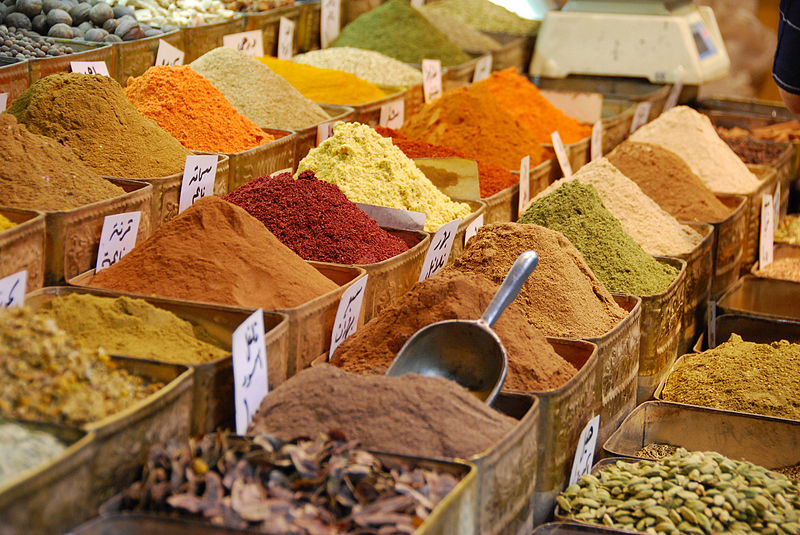Zanzibar’s Spice Trade
A Journey Through Fragrance and History
Zanzibar, an enchanting archipelago off the coast of Tanzania, is known not only for its stunning beaches and vibrant culture but also for its illustrious history as the “Spice Island.” The spice trade has been an integral part of Zanzibar’s identity for centuries, shaping its economy, culture, and international relations. Today, the island’s spice farms offer visitors a fragrant journey through history, providing a unique glimpse into the world of spices that have flavoured the island’s past and continue to enrich its present.

History
The origins of Zanzibar’s spice trade date back to the early 16th century when the island became a strategic port for Arab traders. These merchants brought with them cloves, nutmeg, cinnamon, and black pepper, among other spices, which thrived in Zanzibar’s fertile soil and tropical climate. Over time, these spices became highly sought after, establishing Zanzibar as a pivotal centre for the global spice trade. The Portuguese, who controlled the island in the early 16th century, capitalized on this burgeoning trade before the Omanis took over in the 17th century, further cementing Zanzibar’s reputation as a spice hub.
Earliest days
By the 19th century, under the rule of Sultan Seyyid Said of Oman, Zanzibar’s spice trade reached its zenith. The Sultan relocated his capital from Muscat to Stone Town, Zanzibar’s historic heart, transforming the island into the world’s largest producer of cloves. This era saw the proliferation of spice plantations, or “shambas,” which employed thousands of local labourers. The spice trade not only enriched the island’s economy but also fostered a cosmopolitan culture, as traders from around the world converged on Zanzibar’s shores, bringing with them diverse influences that can still be seen today.
Tourist attractions
Visitors to Zanzibar today can embark on captivating spice tours, which are among the island’s most popular attractions. These tours provide an immersive experience, allowing tourists to walk through lush spice plantations and learn about the cultivation and uses of various spices as well as how they’re used in Zanzibar dining. You can try experiencing a traditional meal at one of the famous resorts there such as The Residence Zanzibar. Guides often demonstrate how to identify different spices by their leaves, bark, and aroma, sharing fascinating anecdotes about their history and medicinal properties. Tourists can taste fresh spices, exotic fruits, and aromatic herbs, gaining a sensory appreciation for the flavours that have played a crucial role in Zanzibar’s culinary and cultural heritage.
Why cloves matter
Cloves, which once dominated Zanzibar’s economy, remain a significant part of the spice tours. The island’s clove trees produce large quantities of this aromatic spice, which is used globally in cooking, perfumery, and traditional medicine. Cinnamon, both in its bark and leaf form, captivates visitors with its sweet and warm fragrance. Nutmeg and mace, often found growing together, are another highlight, each offering a unique flavour profile. Pepper vines, vanilla orchids, and cardamom bushes also feature prominently, showcasing the island’s diverse spice portfolio.
Related posts
Explore Phuket’s Must-Visit Markets
Archives
Categories
- Appetizers (21)
- Arab (48)
- Bars (32)
- Burmese (6)
- Café (23)
- Casual Dining (25)
- Chinese (34)
- Coffee House (27)
- Desserts (25)
- Destination Dining (365)
- Diner (16)
- Family Restaurants (54)
- Fast Food (50)
- Fine Dining (508)
- Food Facts (206)
- Healthy Food (90)
- Hong Kong (10)
- Indonesian (15)
- Italian (2)
- Japanese (17)
- Main Dishes (49)
- Maldivian (71)
- Miscellaneous (8)
- Miscellaneous Topics (365)
- Palate (61)
- Recipes (78)
- Restaurants (189)
- Sea Food (82)
- Singaporean (31)
- Sri Lankan (61)
- Steaks & Grill (57)
- Street Food Stalls (136)
- Thai (88)
- Types of Cuisines (105)
- Vegan (50)
- Vegetarian (9)
- Vegeterian (33)
- Vietnamese (22)
- Western (11)

